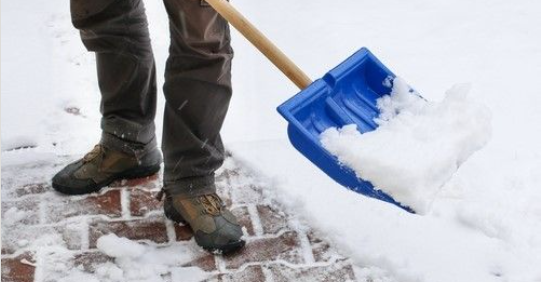
If feasible, you should consider contracting out all snow removal to a professional snow removal company to help eliminate the risk to your employees and potentially have another party responsible should there be a slip/fall incident. Be sure to collect all risk transfer documents including being named as additional insured. If it is not feasible to contract snow removal, mechanical snow removal devices such as snow blowers and snowplows should be utilized. This practice reduces the exposure of injury due to manually removing snow. Keep in mind that all snow removal equipment should be well maintained and prepared well in advance of a snowfall.
If snow removal requires manual handling, the following are some things to keep in mind:
Shoveling snow can cause injuries or even death if not performed properly. The following are things you should take into consideration prior to heading outside to remove snow from sidewalks and driveways:
- Guard against cold-weather injuries such as hypothermia, pernio, and frostbite.
- Dress properly. Layer clothing and use slip-resistant insulated foot-wear.
- Warm-up by doing some light exercises such as stretching or walking in place.
- Protect your heart. Check with your doctor to make sure you are medically capable.
- Only use lightweight yet sturdy, ergonomically correct shovels.
- Shovel frequently throughout the storm to avoid loading the shovel with heavy wet snow.
- See proper shoveling techniques. Bend at the knees, lift with your legs and push the shovel. Walk to where you want to drop the snow. Throwing snow over your shoulder in a twisting motion stresses your back.
- Take regular breaks and re-hydrate avoiding alcoholic or caffeinated beverages.
- Take frequent breaks every 20-30 minutes, especially if the snow is wet and heavy.
- Don’t smoke, eat, or consume caffeine right before or while shoveling. These activities divert blood away from your heart and cause extra stress on your cardiovascular system.
From a procedural standpoint, institute a guideline or policy to address the issue of employees and students arriving for work/classes before the school has had a chance to adequately remove snow from parking lots and sidewalks. Email/text communication can be used to get the word out as to when snow removal has taken place and when buildings will be open/available.
A snow removal log should also be maintained. This is a good way to document when and where snow has been removed for use if there is a slip/fall claim. Snow removal companies can often provide this document if asked to include such information either separately or as part of their invoice.
By: David Romance, WSI Risk Control Specialist
Please see the link for the snow maintenance log listed below:
To download the PDF version of this article, click here.
